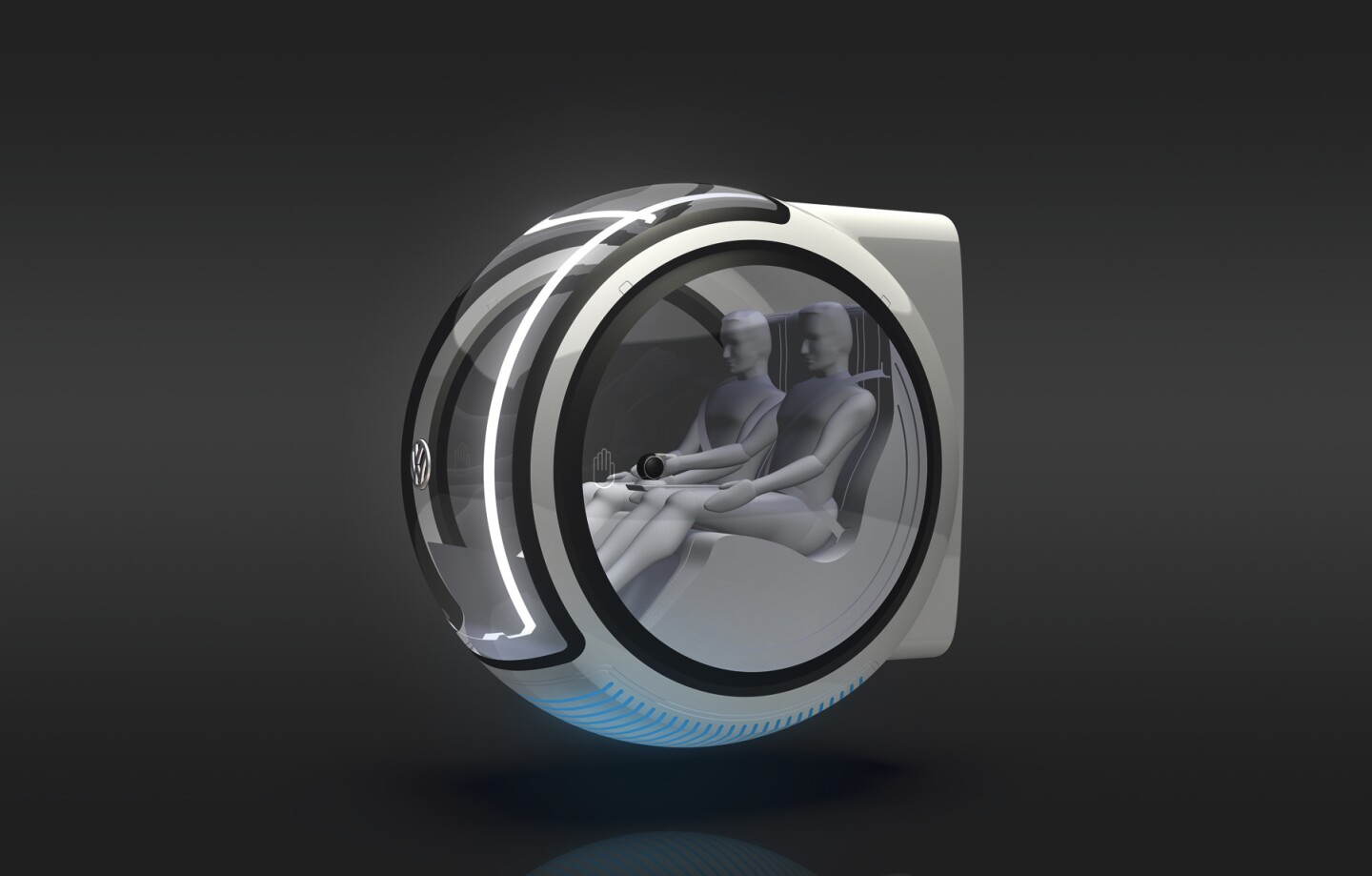The world of personal mobility transporters doesn't bring a whole lot of glamor. The Segway was never exactly an enviable ride, and newer concepts like the GM EN-V aren't any better. But a Volkswagen that hovers a few feet over the ground? That channels a mix of Back to the Future and The Jetsons that adds some excitement to the personal mobility segment.
The Hover Car is one of three top concepts that Volkswagen procured through the crowd-sourced "People's Car Project" (PCP). Since debuting the project in China nearly a year ago, Volkswagen has inspired 33 million website visitors and 119,000 unique ideas for possible products and technologies.
"The ‘People's Car Project' in China marks the beginning of a new era in automobile design", Luca de Meo, Director of Marketing, Volkswagen Group said. "We are no longer just building cars for, but also with customers and at the same time initiating a national dialog which gives us a deep insight into the design preferences, needs and requirements of Chinese customers."
From the initial 119,000 ideas, Volkswagen picked three of its favorites. It developed concept cars around the ideas and is displaying them at the Beijing Motor Show.

The Hover Car is the concept that catches our attention the most, if only for the fact that it brings back childhood memories of the hoverboard that Marty McFly used as an escape vessel in Back to the Future II. Volkswagen defines the car as an all-electric two-seat city car that hovers just above the ground and travels along electromagnetic roadways.
"The creative ideas from the ‘People's Car Project' give us a valuable insight into the wishes of Chinese drivers," Simon Loasby, Head of Design at Volkswagen Group China, said. "The trend is towards safe cars that can easily navigate overcrowded roads and have a personal, emotional and exciting design."
The other two ideas don't quite inspire the "futuristic nostalgia" of the Hover Car. The Music Car uses a series of exterior OLED lights to create light shows in tune to the driver's music - kind of the opposite of the "safe cars" that Loasby mentions. The Smart Key is a twist on current generation smartphone integration. Instead of a phone, the concept uses a touchscreen-equipped vehicle key to provide information about the car, such as fuel level and security.
Thanks to the strong response, Volkswagen is extending the People's Car Project. Originally scheduled for a one-year run, Volkswagen says that it will now sponsor the program indefinitely. It also plans to increase the scope of the project. In the past, it has also said that it might extend the program beyond China into other markets.
As far as actual production models, PCP may give Volkswagen some inspiration and ideas, but the automaker doesn't plan to leave all details to the public. It will only proceed with projects that are in line with corporate objectives, and it will obviously have the ultimate say as to the final details.
"In a long-term context, the findings of the ‘People‘s Car Project’ will influence Volkswagen’s product strategy," de Meo said. "The design of our models will, however, continue to reflect the tradition of the Volkswagen brand. If at some time in the future we are to produce a vehicle from the ‘People's Car Project', it will be a combination of customers' opinions and brand tradition."
The video below is in Chinese, but it does provide an insight into what the drum-like Hover Car concept could look and perform like.
Source: Volkswagen AG via World Car Fans










